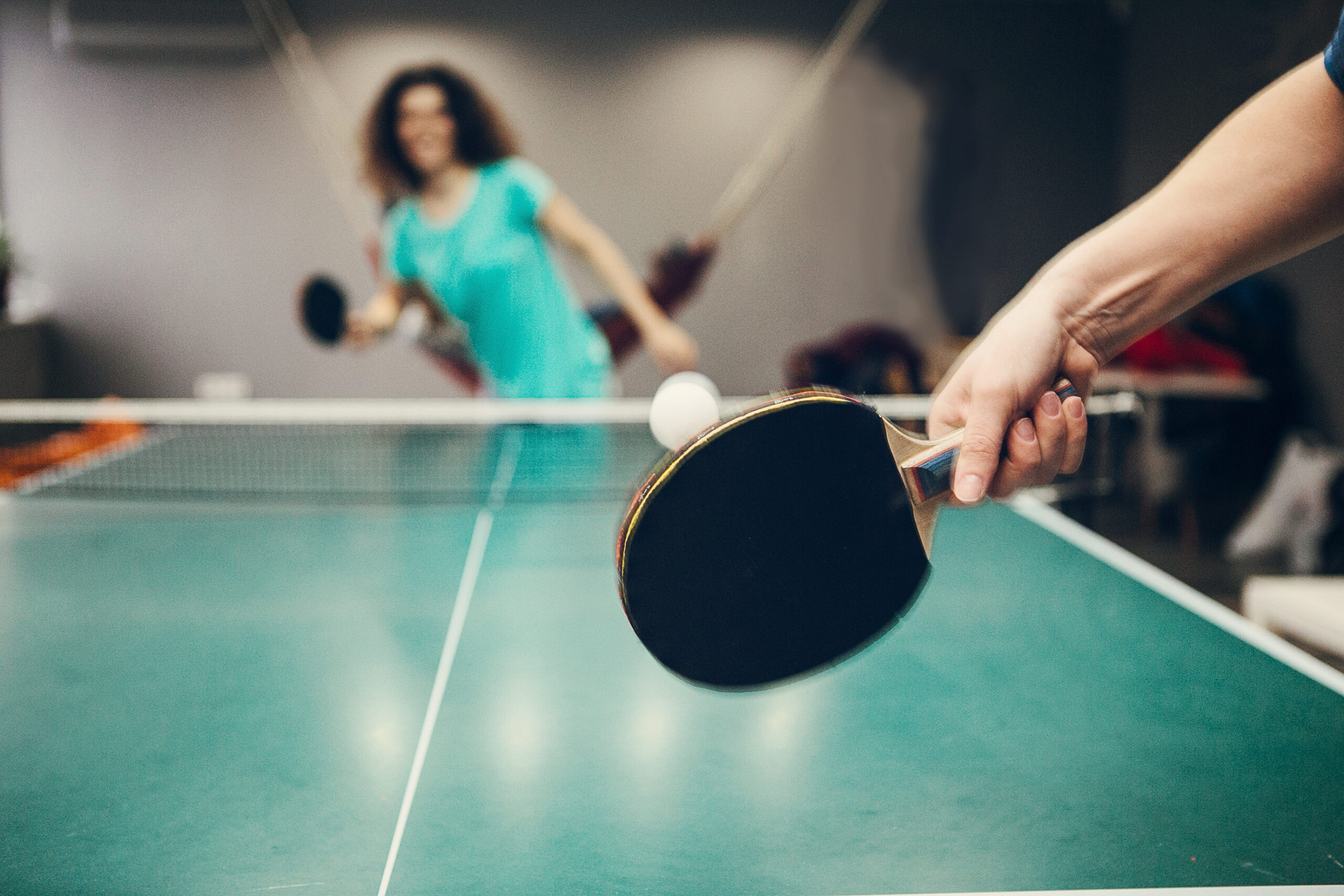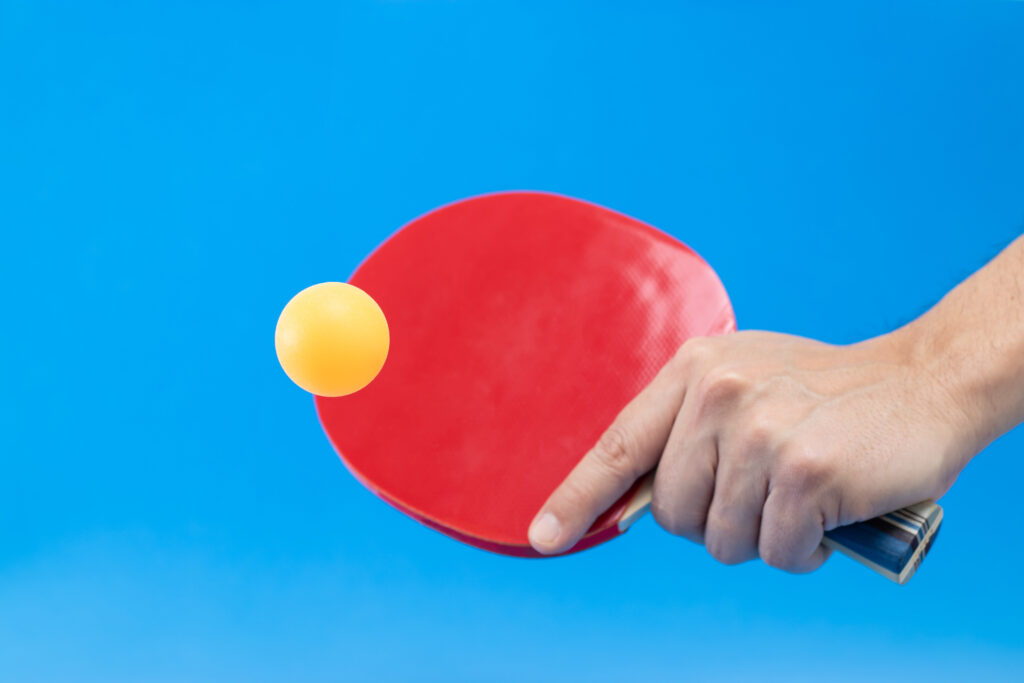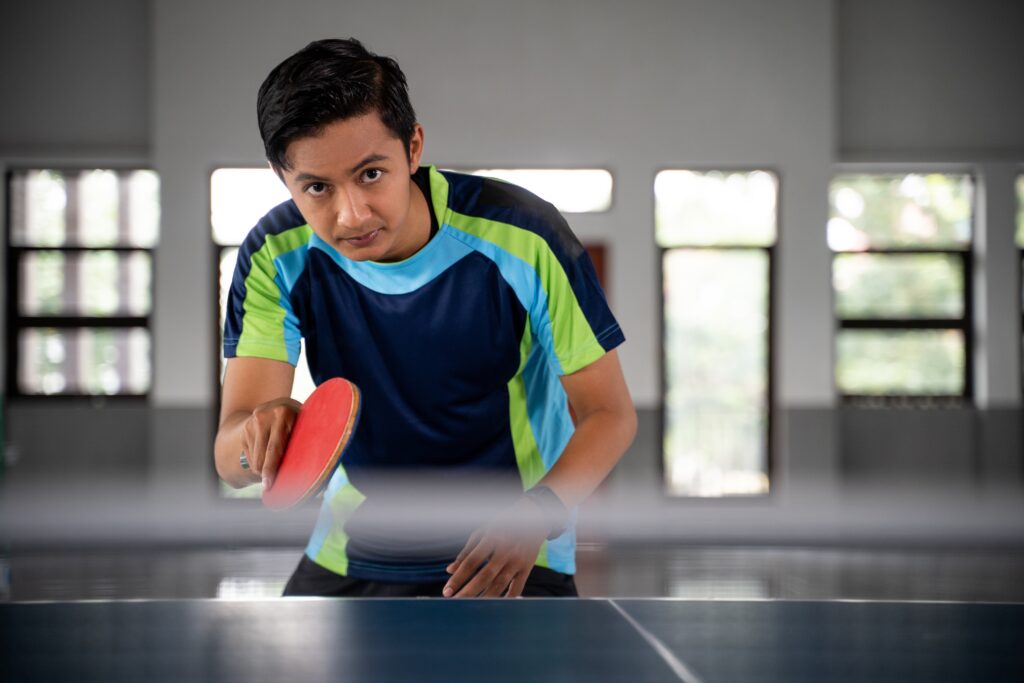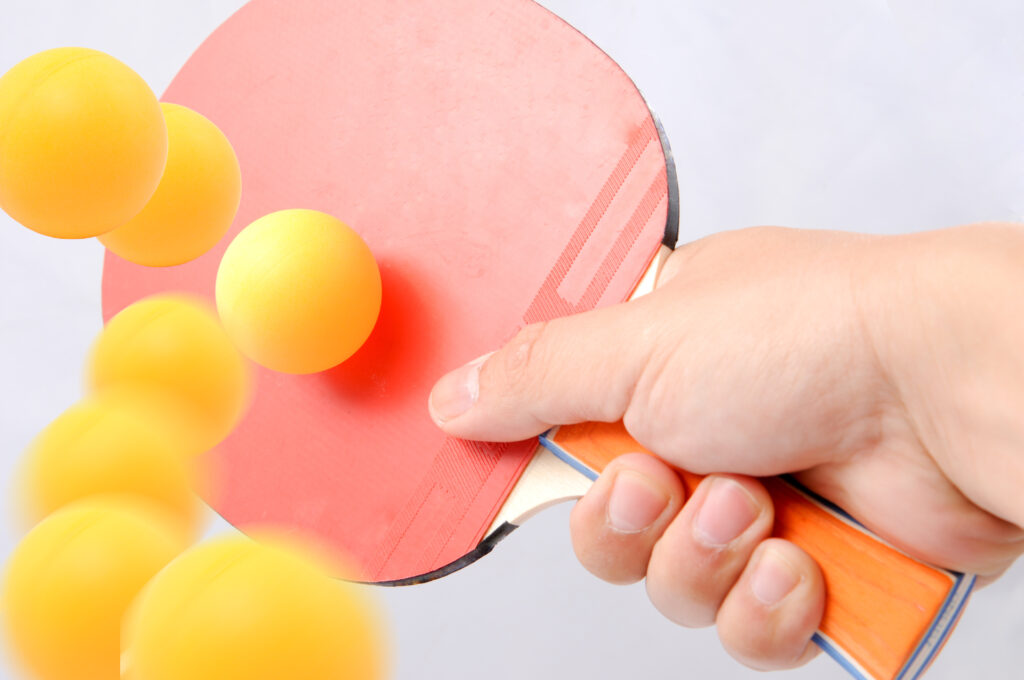Ping-pong, also known as table tennis, is a sport that requires skills, agility, and strategy. Whether you're a beginner or intermediate player, there's always room for improvement, including adding techniques in your position, serve, and shots. If you want to hone your skills and stand out among other players, follow this guide to unleash your skills and easily win the game.
How To Get Better at Ping-Pong: A Beginner’s Guide

Contents
Learn the Basics
Building a solid foundation of the basics is crucial if you want to improve your game. But if you’re playing the game for the first time, you should read up on how to play ping-pong to have a deeper understanding of this guide.
Choose the Right Racket
The fundamental skills might be difficult and sometimes impossible to execute if the racket is not designed to perform those. Investing in a high-quality one should be one of the few things to consider if you want to level up your gameplay. Using the same paddle during practices and matches will help you establish a good grip and master the techniques.
Develop a Warm-Up Routine
Physical fitness is vital in sports, whether you’re playing for fun or competitively. Stretching and keeping your body active can improve your body’s sharp coordination and agility during the game. It also saves you from extreme body pain afterward!
Footwork Practice
Good footwork is essential to improve body reflexes and swiftly return the ball even in unpredictable directions and varying ball speed. The right foot placements in a game also enhance the quality of your shot, giving you a high chance to save a ball even if it lands on the edge.
Good Handgrip and Positioning
Developing a right handgrip and a good, ready position is vital to becoming a better player.
To hold it correctly, you must establish a tight grip and avoid letting your fingers touch the racket’s surface.

For a ready position, widen your hips, bend your lower body, and keep your elbow close to your body. Keep in mind that whenever giving a shot, it is vital to have body coordination.

Hit the Ball Right
Having a consistent ball throw might be difficult for beginners. Keep hitting in the middle of the racket to ensure a stable ball. This technique will help you control the ball’s placement and prevent it from jumping onto the outside court.

You can practice receiving the ball by hitting it upwards. Doing so gives you stability and allows you to improve your ball control.

Understand the Rules
Knowing about the practices — even playing a friendly game — is necessary. The first thing you may want to know is the official rules. Mastering it gives you the advantage of playing a fair game and prevents you from losing a score.
Take note that playing singles has different rules from doubles. Playing doubles might be difficult at first, and learning ping-pong doubles rules is essential to know how to play it right.
Fundamental Skills
These skills are the most critical strokes applied to ping-pong games, including the drive, push, flip, spin, loop, and fast serve.
Drive
The drive is when you hit the ball upward and diagonally. Players often use this move for training drills as it keeps the ball in play and helps them develop a good handgrip, body position, and muscle memory. The key to executing this is to feel the ball and build consistency. Drawing attention to the spin and power may lead to varying shots and errors.
Although it may take some time and practice to master this stroke, it can be one of your most essential skills once you get used to it.
Push
The push stroke is vital in any ping-pong game. Forehand and backhand push allow you to return a low ball; with this move, you can control the ball’s placement.
When the approaching ball is low, a defensive push must be suggested. This way, you can prevent the opponent from developing an attacking strategy.
Remember to give an aggressive and not an easy push, as it may allow the opponent to attack the ball. Apply a heavy and long ball effectively in this stroke to keep the game to your advantage. This stroke is crucial but may be challenging as it requires timing and proper control.
Flip
Flip or flick is executed as if you are flipping the ball and is applied with a quick wrist action. This technique is used by players to develop an attacking strategy. With this stroke, the key to using it effectively is aggressiveness. The backhand flip is suggested when the opponent gives you a low ball on your left-hand court if you’re right-handed.
Keep in mind to relax your wrist when doing this stroke. This move requires timing and the right amount of power applied to the ball. Returning the ball with a simple push may be a bad idea when the opponent gives you a ball with this technique. So, learning how to do defensive attacks gives you an option to return the ball.
Spin
Knowing how to read and understand the trajectory and spin of the ball is essential in ping-pong. Only if you can do this will you be able to use the proper technique in the right situation and adjust the angle of the racket. Learning to execute this technique correctly gives you the advantage of reading your opponent’s type of spin and returning the ball right. The three different types of spin are:
- Topspin: A rotation to the top.
- Backspin: A rotation to the rear.
- Sidespin: A rotation to the side.
It is vital to note that incorporating your lower body while doing this move will make the spin more powerful. Using the wrong type of spin as a counterattack to a ball may have a high tendency of an error shot — which can be used against you throughout the game. Practicing this skill should be one of your training drills to prevent this from being your weakness.
Loop
The loop is a stroke used to give a shot with a heavy topspin intended to provide an unpredictable ball placement once struck. This may be a challenging technique to master, and it requires body coordination. The use of the elbow and lower part of the body is suggested to create the power for this move.
Forehand Fast Serve
Forehand fast serve is one of the ways to develop an opening attack. If you can strategize, the opponent may likely miss this shot.
This serve can be used to your advantage as it simultaneously gives the opponent a “surprise” serve and an attack. Striking the ball fast may pressure the opponent and give them less time to think about returning it correctly.
However, this shot may be dangerous for beginners because it has a high chance of errors. To avoid that, read some ping-pong serve tips and save yourself from an error service.
Improve Your Shots
Incorporate these tips to improve your shots.
Proper Positioning
Maintaining an excellent ready position while playing ping-pong can give you the upper hand by allowing you to hit the ball without leaving an opening for your opponent to attack. To achieve this, start by establishing proper positioning. Doing so will prepare you to return your opponent’s shots and control the game.
Aim for a Low Ball
Prevent your opponent from creating a strategy attack by hitting the ball low. The correct positioning is necessary to prevent you from giving a high one. This also allows you to generate an opening for an attack.
Use Striking Techniques
Practicing table tennis basic skills and hitting techniques gives you many options to return the ball strategically. Remember that understanding how they work gives you knowledge of when and how to use them.
Read Your Opponent’s Move
Understanding your opponent’s next move before hitting the ball can take considerable time, as it requires strong experience and mastery of the game. To achieve this, it is essential to consistently analyze your own game as well as the moves of your opponent and assess them after every match. This will help you learn from mistakes and improve your shots in your next game.
Change Shot Speed and Distance
It can be effective to trick your opponent to win the match. One way to achieve this is by varying the speed and direction of your returns, making it difficult for them to anticipate. Another tactic is to add spin to your shots, which can tire out your opponent and make it harder for them to respond effectively. Implementing these strategies can improve your chances of winning the game.
Find Your Best Skill
A way to take the game to the next level is knowing yourself. Take note of the things you’re best and worst at, and you can focus on working more on your weaknesses to improve your skills.
Third-Ball Attack
Learning to score quickly and limit your opponent’s scoring opportunities involves mastering the third-ball attack technique. To execute this strategy, start by serving with a challenging move that is difficult to smash, ideally, a low or tricky shot that will likely force your opponent to give a high ball. Once your opponent returns the ball, seize the opportunity to follow up with a powerful attack and finish off the point.
Practice Regularly
Applying and practicing proper technique is the next step toward getting better at ping pong. Along with practicing yourself, there are several ways to practice to improve your game in other ways.
Practice With Friends
When practicing ping-pong, starting with people you’re comfortable with is a good idea. Look for opponents among your friends or acquaintances at the same skill level as you and play with them. This way, you can experiment and use the basic techniques you’ve learned. Playing doubles can also help you improve your footwork, body movement, and teamwork.
Practicing with strangers might be intimidating and hinder you from trying new techniques. If you want to build your confidence, try learning how to practice ping-pong alone to prepare before playing with others and to improve by yourself.
Play Against Different Opponents
To enhance your gameplay, you must first challenge yourself. Play against opponents at your level and those better than you; observe their strengths and weaknesses and analyze how the game went. This will help you to strategize for your upcoming matches.
Watch Professional Players
Learning from individuals who are more skilled than you is crucial. Observing professional games lets you incorporate their techniques into your gameplay and perform like a trained player. It is recommended to continue watching their moves before attempting to implement them in your games.
Join Ping-Pong Communities
Joining ping-pong communities can broaden your knowledge and help you improve your game. By joining these groups, you can receive tips, techniques, and updates on scrimmage or tournament opportunities in your area. Involving yourself in such activities can provide valuable experience and knowledge to elevate your game to the next level.
Develop a Good Sports Mindset and Attitude
It can be overwhelming when you realize that your opponent is scoring frequently, leading to feelings of pressure and discouragement. In such situations, taking a moment to collect yourself and focus on your game is essential. Remain calm, maintain your ready position, and concentrate on your moves and strategy instead of closely monitoring the score. By doing so, you can regain your confidence and stay motivated to perform at your best.
How Long Does It Take To Become Good at Ping-Pong?
Becoming a skilled ping-pong player requires dedication, practice, and experience. Developing muscle memory is essential to improving your game, so it’s crucial to repeat fundamental skills regularly. Generally, it takes about two years of consistent training to become proficient in ping-pong.
However, the time it takes to become a good player depends on how frequently you play. Consistency and patience are vital to gaining experience, so it’s crucial to show up for training and give yourself ample time to improve. If you want to expand your knowledge and skills in addition to your training, you can read more tips and tricks here.
Enjoy and Have Fun
Improving your ping-pong skills can be challenging, especially if you don’t enjoy training or match play. However, approaching each session with a willingness to learn and finding enjoyment in the process can help you relax and discover new ways to advance your game.
It’s important to remember why you started playing this game and to find joy in pursuing new goals, even when you experience defeat. By doing so, you’ll be on your way to becoming a better ping-pong player!
